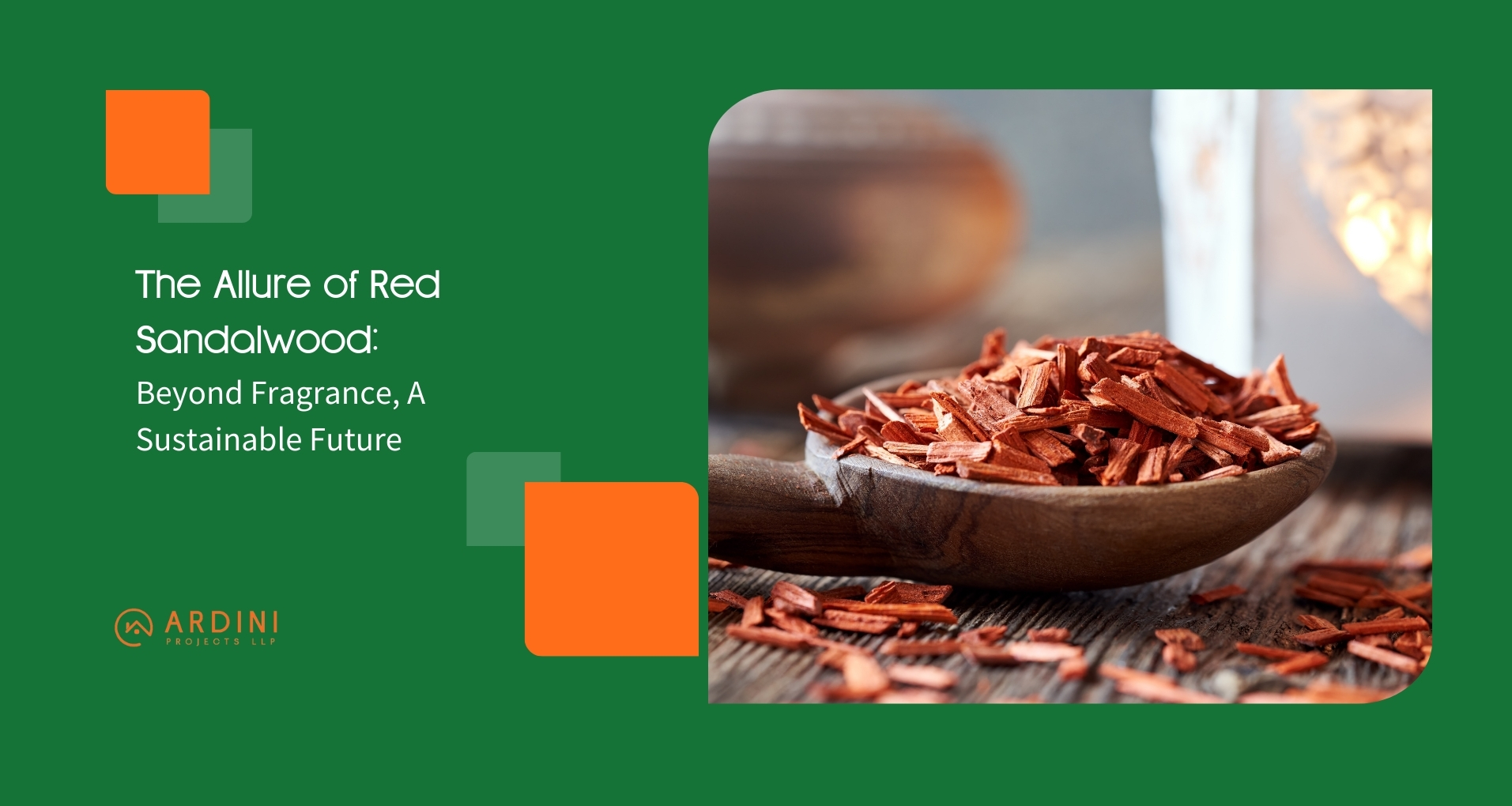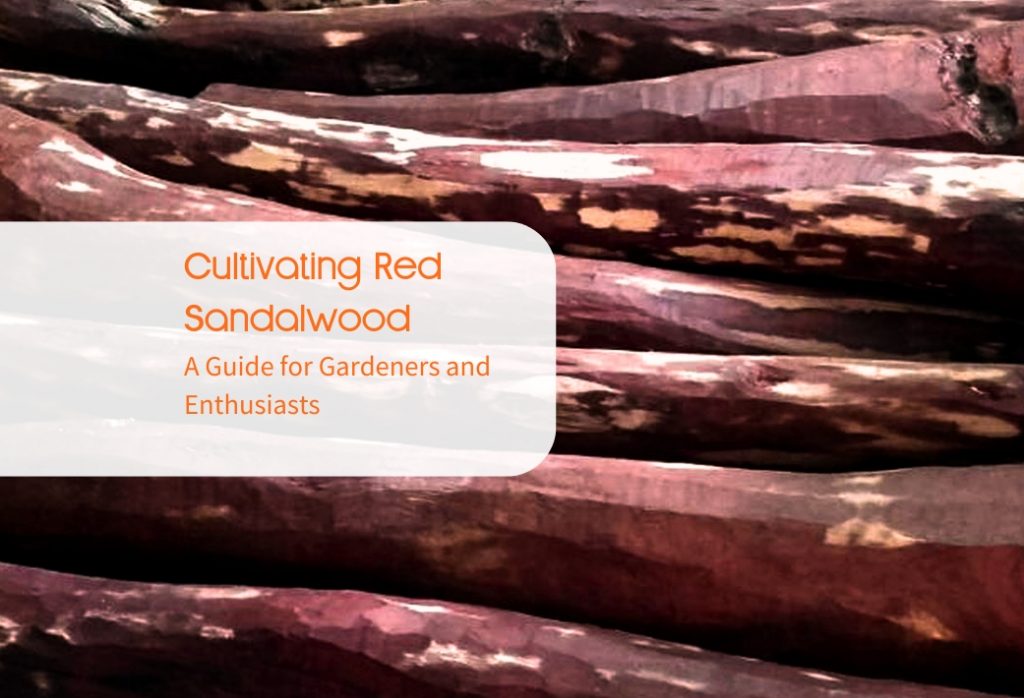The Allure of Red Sandalwood Farming: Beyond Fragrance

Red sandalwood farming has captivated cultures worldwide for centuries. Its rich aroma has graced religious ceremonies, adorned bodies as fragrant paste, and soothed the senses in luxurious perfumes. But the story of sandalwood, particularly the prized red sandalwood, goes far beyond its captivating fragrance. In the 21st century, this versatile tree offers exciting possibilities in medicine, sustainable forestry practices, and even responsible investment opportunities.
Red Sandalwood: A Precious Treasure
The red sandalwood tree, also known as red chandan tree, is native to South India, particularly to states like Karnataka and Andhra Pradesh. Unlike its white sandalwood tree counterpart, red sandalwood boasts a deep reddish-brown heartwood, the most valuable part of the tree. This precious wood is prized for its perceived medicinal properties.
The Diverse Applications of Red Sandalwood
Traditionally, red sandalwood has been used in various ways:
- For skin care: A 1996 study found that applying red sandalwood to the face may reduce skin diseases. Red sandal powder may have antibacterial effects against certain bacteria causing acne and pimples, reducing the chances of breakouts.
- Ayurveda: In traditional Indian medicine (Ayurveda), red sandalwood is believed to possess cooling and antiseptic properties and is used in various formulations for skin conditions and internal ailments. However, it’s important to note that the medicinal efficacy of these uses requires further scientific exploration.
- Carvings and Crafts: Red sandalwood’s beautiful red hue and intricate grain patterns make it a sought-after material for exquisite carvings and handicrafts.
The 21st Century Renaissance of Red Sandalwood
Recent research suggests the potential for red sanders in the modern world:
- Medicine: Studies are exploring the potential benefits of red sandal compounds for various ailments, including inflammation and certain types of cancers. While these studies are ongoing, the potential for future medical applications is promising.
- Sustainable Forestry: The high demand for red sanders has unfortunately led to illegal logging and environmental degradation. However, initiatives like those at Ecowood Habitat promote sustainable red sandalwood farming. These practices ensure responsible harvesting and reforestation, safeguarding the future of this precious resource.
Investing in a Sustainable Future with Red Sandalwood
Beyond Investment: A Connection to Nature
While the investment potential is attractive, Ecowood Habitat offers more than a financial opportunity. Imagine a farm stay near Bangalore amidst a thriving red sandal plantation. Breathe in the fresh air, witness sustainable practices, and reconnect with nature’s bounty.
Ecowood Habitat offers a unique opportunity to invest in agricultural land in India while contributing to the responsible cultivation of red sandalwood. Here’s what sets them apart:
- Eco-friendly Farming Practices: Ecowood Habitat prioritizes organic farming, fostering a healthy ecosystem for the red sanders trees and minimizing environmental impact. This aligns with eco-friendly farming, which ensures a sustainable future for the land.
- Managed Farmland Services: Investing in farmland can be a complex endeavor. Ecowood Habitat offers managed farm services, managing day-to-day operations, ensuring optimal growth, and responsible harvesting of red sandalwood trees.
- Investment Potential: Red sandal is a valuable commodity, and responsible farming practices can offer a promising return on investment.
A Responsible Future for Red Sandalwood
The future of red sanders depends on responsible management and sustainable harvesting practices. By supporting initiatives like those at Ecowood Habitat, you can contribute to a future where this unique tree continues to be enjoyed for generations.
Exploring Red Sandalwood Ownership
If you’re interested in learning more about red sander tree price, look up options for red sander cultivation or if you are exploring the possibility of owning a piece of farmland dedicated to this precious tree, Ecowood Habitat can be a valuable resource. We can provide insights into the responsible management of red sandalwood plantations and the potential benefits of participating in this sustainable endeavor.
Conclusion
Red sandalwood is more than just a fragrant wood. It represents a cultural heritage, a potential source for future medicine, and a symbol of responsible environmental practices. By understanding its diverse applications and supporting sustainable farming initiatives, we can ensure the continued legacy of this remarkable tree in the 21st century. Explore the possibilities of red sanders ownership and join the movement towards a greener future. Remember, every choice we make contributes to the story of this precious resource.
- Tags : #ecofriendly #ecohabitat, #redsandalwood, Invest, Managed Farming, Managed Farmland



